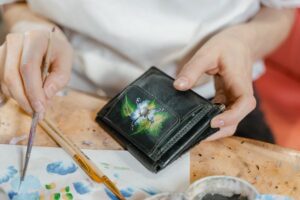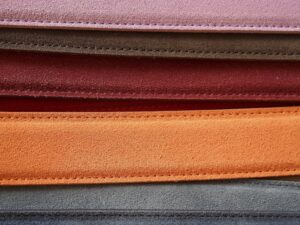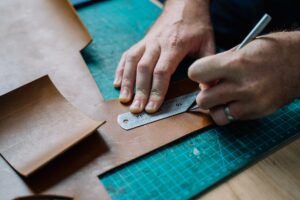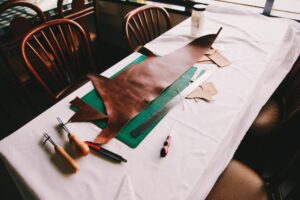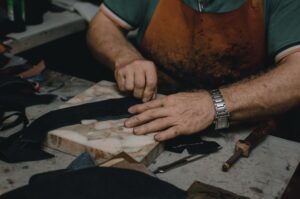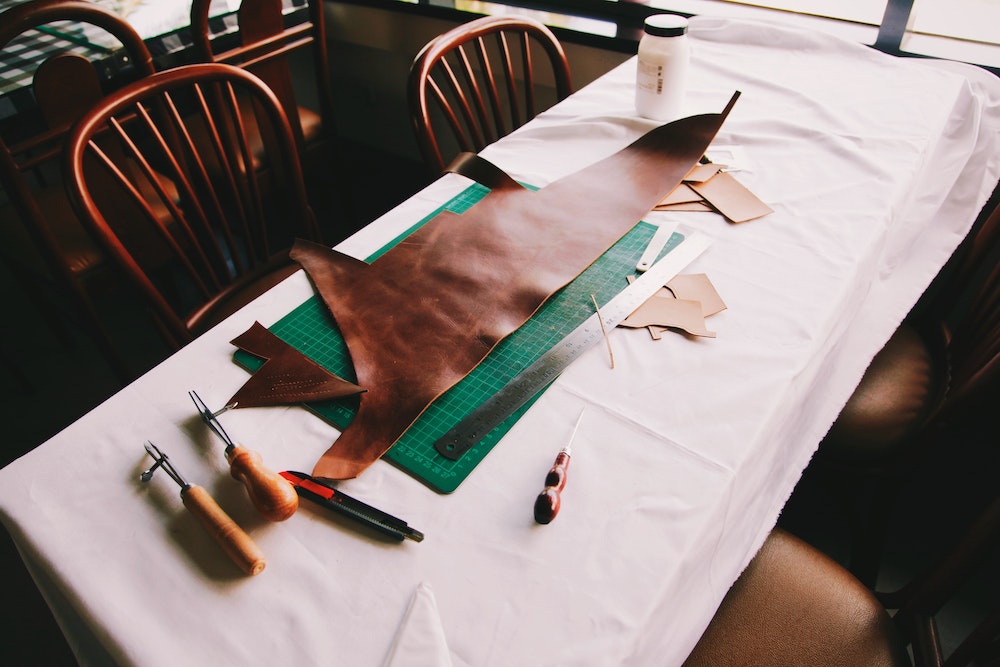
Painting leather can be a great way to transform an old, worn leather item into something new and fresh, or to add a splash of color to an otherwise plain piece. However, it is important to approach the process with care and attention to detail, as painting leather requires the use of specialized tools and techniques.
To paint leather, you will need the following tools:
- Leather cleaner or mild soap and water: To clean the surface of the leather before painting.
- Fine-grit sandpaper: To lightly sand the surface of the leather to help the paint adhere better.
- Leather primer: To prepare the surface of the leather for painting and help the paint adhere better.
- Leather paint: To add color to the leather surface.
- Leather sealer: To protect the paint and prevent it from chipping or flaking.
- Brushes or sponges: To apply the paint and sealer to the leather.
- Mixing cups: To mix the paint and sealer as needed.
- Mixing sticks: To mix the paint and sealer as needed.
- Masking tape: To mask off areas of the leather that you do not want to paint.
- Drop cloths or newspaper: To protect your work surface and catch any drips or spills.
To begin, it is important to prep the leather surface by cleaning it thoroughly using a leather cleaner or a mild soap and water. Be sure to remove any dirt, debris, or oil from the surface of the leather, as these can interfere with the adhesion of the paint. Allow the leather to dry completely before proceeding.
Next, use a fine-grit sandpaper to lightly sand the surface of the leather. This will help to create a rough texture that will help the paint to adhere to the leather more effectively. Be sure to sand evenly, taking care not to sand too deeply and damage the leather.
After sanding, apply a leather primer specifically formulated for use on leather. This will help the paint to adhere to the leather and provide a smooth, even surface for the paint to be applied to. Follow the instructions on the primer packaging carefully, and be sure to apply the primer in thin, even coats. Allow the primer to dry completely before proceeding.
Once the primer is dry, it is time to apply the paint. Use a leather paint specifically formulated for use on leather, and apply the paint in thin, even coats. Be sure to follow the instructions on the paint packaging carefully, and allow each coat of paint to dry completely before applying the next one. It may be necessary to apply multiple coats of paint to achieve the desired color depth.
After the final coat of paint has been applied, allow the paint to dry completely. This may take several hours or overnight, depending on the type of paint and the humidity level. Once the paint is dry, finish the process by applying a leather sealer to help protect the paint and prevent it from chipping or flaking. Follow the instructions on the sealer packaging carefully, and allow the sealer to dry completely before using the painted leather item.
It is important to note that painting leather can be a time-consuming and potentially challenging process. It is important to choose the right tools and materials, and to follow the instructions on the paint and primer packaging carefully to ensure that the paint adheres to the leather properly and produces a professional-looking result. If you are not confident in your ability to paint the leather properly, you may want to consider hiring a professional to do the job for you.
In conclusion, painting leather is a process that requires some care and attention to detail. By using the right tools and techniques and following the instructions on the paint and primer packaging carefully, you can achieve beautiful and professional-looking results. Whether you are a beginner or an experienced leatherworker, painting leather can be a rewarding and satisfying process.
It is important to note that it is important to choose the right tools and materials for the job to ensure that the paint adheres to the leather properly and produces a professional-looking result. Be sure to follow the instructions on the paint and primer packaging carefully and use the tools and techniques recommended by the manufacturer to achieve the best possible results.

